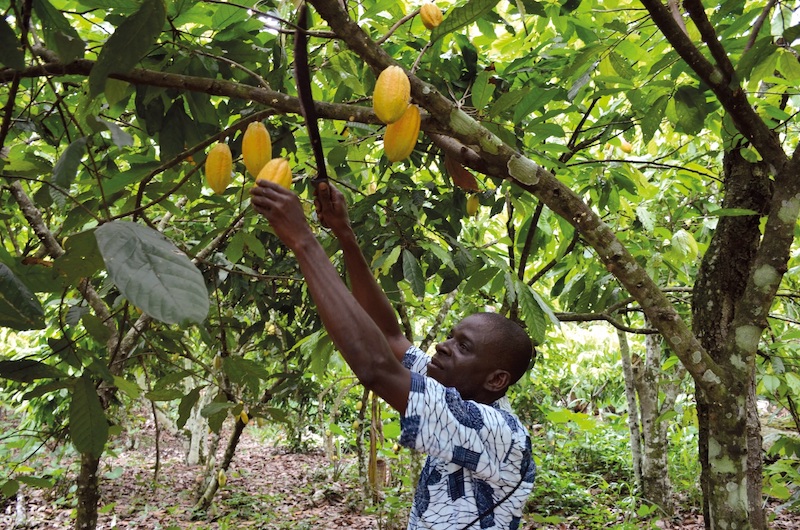Guest blog: Major sector tests set to be unravelled at the World Cocoa Conference

With the World Cocoa Conference set to begin this weekend in Brussels, Belgium, Frank Joosten, Programme Director, Cocoa, at the IDH sustainable trade initiative, offers his view on some of the most pressing challenges facing the sector
Failing to share data is holding the cocoa sector back.
Global cocoa prices have shot up. After years of oversupply and low prices, the sector is now confronted by low yields, reduced supplies and high prices. Pest and disease outbreaks and the effects of climate change are identified as main reasons for these developments. Furthermore, the business case for West African cocoa producers does not provide them with incentives to invest in good agricultural practices to make their farming more resilient. If we listen to climate scientists, we know that we can only expect more extreme weather events in the future (and therefore, continued production and price fluctuations). The sector therefore needs to make some courageous changes.
Cocoa farmers need a living income
Chocolate companies rely on producers’ supply. When farmers do not earn enough to cover necessities, they cannot plan beyond the short term or invest in resilient farm improvements. A living income is how much a household in a particular place needs to earn to cover costs of production and afford a decent standard of living, with enough food, water, housing, education, healthcare, transport, clothing, and other essentials for all members of the household. To be able to offer a secure supply, producers need at least a living income.
By now, the cocoa sector understands and accepts living income as an objective. Back in 2018, the ICCO World Cocoa Conference agreed that the cocoa sector would not be sustainable if farmers did not earn a living income. In December 2018 the Belgian chocolate sector aimed for a cocoa living income through Beyond Chocolate. Two years later, the Dutch Initiative on Sustainable Cocoa was set up to close the cocoa living income gap. Many speakers at the Amsterdam WCF / Chocoa conference in February 2024 name-checked living income, but no mention was made of how much cocoa farmers in their supply chain earned and how that related to the living income benchmarks.
Data is key
What has changed in farmers’ income levels in the past six years? Have they moved closer to the calculated living income benchmark levels for the different regions? What percentage of the cocoa farming households are earning a living income by now? The honest answer is that we simply don’t know. To understand living income gaps properly, we need data.
The good news is that the data is out there. Researchers, cocoa companies’ monitoring specialists and civil society organisations collect lots of data on farmer incomes and the factors that impact farm income levels. I have seen this as my team in the IDH cocoa programme works with a variety of cocoa traders, chocolate makers and the researchers that they hire to do their monitoring. Tony’s Chocolonely and their Open Chain partners publicly share income data in their supply chains. However, the wider cocoa and chocolate industry does not regularly share data or insights into cocoa farming income levels in their value chains, most likely because of reputational risks or legal concerns. But policymakers in producing and importing countries, industry partners and sustainability professionals in the cocoa sector urgently need reliable and up-to-date information about the key aspect that drives sustainability in the global cocoa sector.
The Cocoa Income Inventory
The solution is to aggregate and anonymise the data and use it to measure progress towards closing living income gaps and helping stakeholders keep each other accountable on their living income commitments. The Cocoa Income Inventory, launched by IDH, Wageningen University & Research, Voice Network, KIT, Sustainable Food Lab, Agri-Logic, and Südwind Institut allows cocoa and chocolate companies to share their data safely and it will be updated frequently. The aim is that this will lead to a robust, publicly available and harmonised data and evidence sharing platform, which can be used to inform policy makers and industry partners in the cocoa sector, measure progress and ensure accountability towards joint living income commitments.
The Cocoa Household Income Study offers step-by-step guidance on data collection and assessing the income of cocoa-producing households. In combination with the Cocoa Income Inventory, this guideline should lead to greater alignment in data collection and sharing on living income parameters and insights on the impact of interventions.
Admittedly, the success of the Cocoa Income Inventory depends on companies actively contributing their data. It asks for bold changes and change is never easy. A lot more work still needs to be done, but we are confident that the sector increasingly understands that addressing living income now, collaboratively, will pay back in dividends through a more secure supply, reaching living income targets and improving the professionalism of the sector.
- Confectionery Production is the official media partner for this year’s World Cocoa Conference, so if you’d like to meet up or have any editorial ideas or news for the event, contact editor Neill Barston at [email protected]



